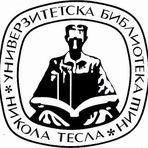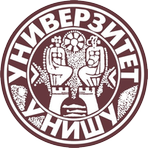Title
Uticaj ulaganja u istraživanje i razvoj na efikasnost intelektualnog kapitala i rentabilnost preduzeća
Creator
Janjić, Ivana, 1991-
CONOR:
21433191
Copyright date
2023
Object Links
Select license
Autorstvo-Nekomercijalno-Bez prerade 3.0 Srbija (CC BY-NC-ND 3.0)
License description
Dozvoljavate samo preuzimanje i distribuciju dela, ako/dok se pravilno naznačava ime autora, bez ikakvih promena dela i bez prava komercijalnog korišćenja dela. Ova licenca je najstroža CC licenca. Osnovni opis Licence: http://creativecommons.org/licenses/by-nc-nd/3.0/rs/deed.sr_LATN. Sadržaj ugovora u celini: http://creativecommons.org/licenses/by-nc-nd/3.0/rs/legalcode.sr-Latn
Language
Serbian
Cobiss-ID
Theses Type
Doktorska disertacija
description
Datum odbrane: 1.6.2024.
Other responsibilities
Academic Expertise
Društveno-humanističke nauke
University
Univerzitet u Nišu
Faculty
Ekonomski fakultet
Group
Katedra za ekonomiku i organizaciju preduzeća
Alternative title
ǂThe ǂimpact of research and development investments on the intellectual capital efficiency and profitability of enterprises
Publisher
[I. S. Janjić]
Format
275 listova razl. paginacija
description
Biografija autora: P-18
Bibliografija: listovi 205-228
description
Intellectual Capital Management, Business Performance Management
Abstract (en)
During the previous decades, economic, market, social and other changes induced by the development of technology and science have contributed to the transformation of capitalism, the so-called industrial era into an economy based on knowledge and other intellectual resources. The core of the development of this knowledge economy is not material resources (as was the case with the industrial era), but knowledge, innovations and other outcomes of R&D activities, other intangible assets, and cooperative relations with the key stakeholders. In a comprehensive sense, the foundation of the knowledge economy is intellectual capital, and it is characterized by rapid technological progress, fierce competition and extensive R&D investments.
The purpose of the doctoral dissertation is to determine the importance of the effective and efficient implementation of R&D and to identify the challenges of managing the portfolio of R&D projects in modern conditions, observing the key R&D financing sources R&D of highly innovative enterprises. The purpose of the doctoral dissertation is to determine the interdependence between R&D activities and the enhancement of the company's efficiency, therefore, the main goal of the doctoral dissertation is defined - theoretical and empirical research of the nature and the strength of the impact of investments in R&D activities on the efficiency of intellectual capital and the profitability of the enterprises.
In the theoretical part of the doctoral dissertation, it is pointed out that R&D activities are a crucial factor in creating and maintaining a competitive advantage. R&D activities encourage technological progress and are the primary source of the economic well-being of society. After determining the concept of R&D, challenges during R&D performance management, as well as trends, drivers, advantages and disadvantages of internationalization of R&D activities are investigated. The initiative to undertake R&D investments depends on numerous factors, especially on the availability of internal and external sources of financing. R&D investments of highly innovative enterprises in Europe and the world were examined, along with the impact of the fundamental R&D indicators on the profitability of the enterprises.
By conducting R&D activities, enterprises generate, develop and use a variety of intellectual resources, namely: knowledge of human resources, knowledge contained in technologies and processes, and knowledge resulting from long-term relations with external stakeholders.
Human capital is a crucial input for the implementation of R&D activities. Structural capital facilitates and improves the realization of R&D activities, primarily by building an efficient organizational structure and an innovative organizational culture. Relational capital allows access to resources that the enterprises do not possess and enables it to share costs with partners and reduce the risk in the implementation of R&D projects.
In the empirical part, an original conceptual model of empirical
research is developed in order to the examine the impact of R&D investment on the efficiency of intellectual capital and the profitability of enterprises. Research sample consists of enterprises which are chosen based on criteria of the highest brand value and high intensity of R&D activities.
Application of statistical analysis methods to a defined sample of highly innovative modern enterprises has led to the following key empirical results: 1. The growth of R&D investments (TIR) of enterprises from the research sample affects the increase in the value of intangible assets and goodwill as intellectual capital which is shown in the assets of the balance sheet (Iag); 2. The growth of the indicator of the R&D investments intensity (RII) affects the increase in the value of intangible assets and goodwill (Iag) as intellectual capital which is shown in the assets of the balance sheet (Iag); 3. The research results have not confirmed that the growth of R&D investments (TIR) affects the increase of efficiency indicators of investments in intangible assets and goodwill (Eiag); 4. The growth of R&D investments (TIR) of enterprises from the research sample influences the growth of profitability, measured by the return on equity (ROE); 5. The growth of the indicator of return on R&D investments (RORC) affects the growth of profitability, which is measured by the return on assets (ROA); 6. An increase in the efficiency indicator of intangible assets and goodwill (Eiag) impacts the growth of the enterprise's profitability, which is measured by the indicators - return on assets (ROA) and return on equity (ROE).
Based on a detailed analysis and synthesis of theoretical and empirical findings the recommendations for enterprise management were defined in order to more effectively implement research and development strategies, and increase the efficiency of IC and the profitability of the enterprises.
Authors Key words
istraživanje i razvoj, ulaganja, intelektualni kapital, efikasnost, rentabilnost, preduzeća
Authors Key words
research and development, investment, intellectual capital, efficiency, profitability, enterprises
Classification
005.336.4:005.336.1]:001.891/.892(043.3)
658.155:330.526.33]:001.891/.892(043.3)
Subject
S 190
Type
Tekst
Abstract (en)
During the previous decades, economic, market, social and other changes induced by the development of technology and science have contributed to the transformation of capitalism, the so-called industrial era into an economy based on knowledge and other intellectual resources. The core of the development of this knowledge economy is not material resources (as was the case with the industrial era), but knowledge, innovations and other outcomes of R&D activities, other intangible assets, and cooperative relations with the key stakeholders. In a comprehensive sense, the foundation of the knowledge economy is intellectual capital, and it is characterized by rapid technological progress, fierce competition and extensive R&D investments.
The purpose of the doctoral dissertation is to determine the importance of the effective and efficient implementation of R&D and to identify the challenges of managing the portfolio of R&D projects in modern conditions, observing the key R&D financing sources R&D of highly innovative enterprises. The purpose of the doctoral dissertation is to determine the interdependence between R&D activities and the enhancement of the company's efficiency, therefore, the main goal of the doctoral dissertation is defined - theoretical and empirical research of the nature and the strength of the impact of investments in R&D activities on the efficiency of intellectual capital and the profitability of the enterprises.
In the theoretical part of the doctoral dissertation, it is pointed out that R&D activities are a crucial factor in creating and maintaining a competitive advantage. R&D activities encourage technological progress and are the primary source of the economic well-being of society. After determining the concept of R&D, challenges during R&D performance management, as well as trends, drivers, advantages and disadvantages of internationalization of R&D activities are investigated. The initiative to undertake R&D investments depends on numerous factors, especially on the availability of internal and external sources of financing. R&D investments of highly innovative enterprises in Europe and the world were examined, along with the impact of the fundamental R&D indicators on the profitability of the enterprises.
By conducting R&D activities, enterprises generate, develop and use a variety of intellectual resources, namely: knowledge of human resources, knowledge contained in technologies and processes, and knowledge resulting from long-term relations with external stakeholders.
Human capital is a crucial input for the implementation of R&D activities. Structural capital facilitates and improves the realization of R&D activities, primarily by building an efficient organizational structure and an innovative organizational culture. Relational capital allows access to resources that the enterprises do not possess and enables it to share costs with partners and reduce the risk in the implementation of R&D projects.
In the empirical part, an original conceptual model of empirical
research is developed in order to the examine the impact of R&D investment on the efficiency of intellectual capital and the profitability of enterprises. Research sample consists of enterprises which are chosen based on criteria of the highest brand value and high intensity of R&D activities.
Application of statistical analysis methods to a defined sample of highly innovative modern enterprises has led to the following key empirical results: 1. The growth of R&D investments (TIR) of enterprises from the research sample affects the increase in the value of intangible assets and goodwill as intellectual capital which is shown in the assets of the balance sheet (Iag); 2. The growth of the indicator of the R&D investments intensity (RII) affects the increase in the value of intangible assets and goodwill (Iag) as intellectual capital which is shown in the assets of the balance sheet (Iag); 3. The research results have not confirmed that the growth of R&D investments (TIR) affects the increase of efficiency indicators of investments in intangible assets and goodwill (Eiag); 4. The growth of R&D investments (TIR) of enterprises from the research sample influences the growth of profitability, measured by the return on equity (ROE); 5. The growth of the indicator of return on R&D investments (RORC) affects the growth of profitability, which is measured by the return on assets (ROA); 6. An increase in the efficiency indicator of intangible assets and goodwill (Eiag) impacts the growth of the enterprise's profitability, which is measured by the indicators - return on assets (ROA) and return on equity (ROE).
Based on a detailed analysis and synthesis of theoretical and empirical findings the recommendations for enterprise management were defined in order to more effectively implement research and development strategies, and increase the efficiency of IC and the profitability of the enterprises.
“Data exchange” service offers individual users metadata transfer in several different formats. Citation formats are offered for transfers in texts as for the transfer into internet pages. Citation formats include permanent links that guarantee access to cited sources. For use are commonly structured metadata schemes : Dublin Core xml and ETUB-MS xml, local adaptation of international ETD-MS scheme intended for use in academic documents.


